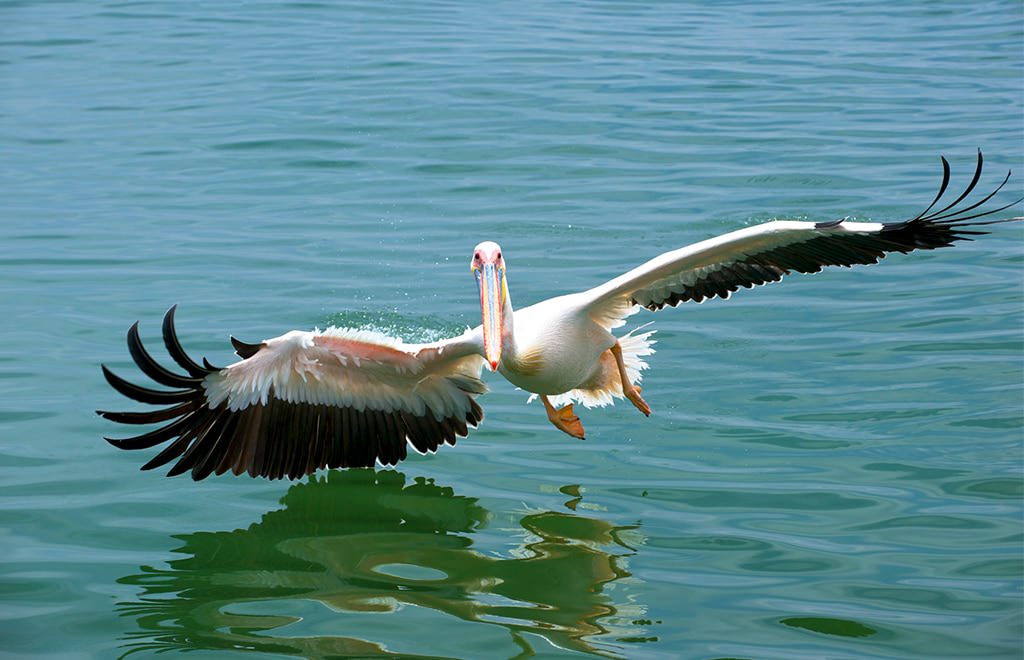The J.N. “Ding” Darling National Wildlife Refuge is one of the most unique aspects of our island… It’s also a mouthful to remember! That’s why most visitors and residents refer to the Sanibel Wildlife Refuge as Ding Darling or more simply, “Ding.”
The wonders of Ding Darling are experienced by first-time island visitors and long-time island residents alike! We’ve taken the kids there a number of times and enjoyed bike rides through the park.
Embrace Your Inner Environmentalist
It’s not hard to embrace your inner environmentalist here on Sanibel Island. Even if nature isn’t “your thing,” most people who visit the island immediately sense the passion and caring attitude island-goers have for the Sanibel environment.

Sanibel Wildlife Refuge i.e. “Ding” Darling
Why is the Sanibel wildlife refuge so important? It doesn’t take long to look around the Florida coastline and see the major developments and even overdevelopment taking place in some cases. Sanibel’s passion for preserving the environment is the anthesis to these types of super developed communities.
Fun Fact: Did you know our sanctuary island is 69% conservation land?
In fact, a large portion of the Sanibel Island is preserved as a natural habitat for native plants and wildlife.
Ding Darling National Wildlife Refuge is home to a number of birds, reptiles and amphibious creatures that made the islands their home long before the first person set foot on Sanibel soil. Now, the islands serve as a home base to hundreds of species. Ding also serves as a second home to “fly-by visitors” that use the Sanibel Wildlife Refuge as a layover or safe zone for feeding and resting. Some of these traveling birds come just for the day, and some stay for a lifetime. I’m sure you can relate! 😉
Rare Sightings at Ding Darling
In fact, one of the refuge’s recent fly-by visitors was an extremely rare Great White Pelican that was more than 4,000 miles away from its homeland. This is the first time an “Old World” species has been recorded in North America. That’s a pretty big deal if you ask me!
It was a pretty big deal for Ding Darling staff members too, who rushed out to see it for themselves. One Ding Darling volunteer mentions the “Pelecanus Onocrotalus,” i.e. the Great White Pelican, can be nearly twice the size as the Brown Pelicans more commonly seen here in Southwest Florida and even the American White Pelicans that often attract birders to Ding Darling to photograph. Where the Brown Pelican maxes out at 11 pounds with a 6-foot wingspan, the Great White Pelican can reach 33 pounds with wings spanning 12-feet wide! As for the American White Pelicans often seen at Ding Darling, they usually max out at 20 pounds with a wingspan between 9-11 feet.

Friends of the Refuge
The “Ding” Darling Wildlife Society – Friends of the Refuge is a non-profit organization whose mission supports the island’s nature conservation and protection of wildlife.
Have you attended any of the education programs at Ding? These are a result of the wonderful volunteers and “Friends of the Refuge” who support the educational programs for adults, students and island visitors. Click here to learn more about the wildlife society, and see how great of an impact this organization has on the Sanibel Island community.

As I mentioned before, the Sanibel Wildlife Refuge is a major part of what makes our island a special place to live and visit. There aren’t too many places like Ding Darling – so, the next time you’re down, be sure to take a ride or stroll through the refuge and embrace your inner environmentalist!
Inside Tip: The best times to visit the refuge are as close to dusk and dawn as the park allows. If you go mid-day, there isn’t as much wildlife activity happening, however, the wetlands and scenery alone is a bright and beautiful element to experience in person.
Interested in homes near the Sanibel Wildlife Refuge? Click here to see all homes for sale on the West End of Sanibel near the refuge.
